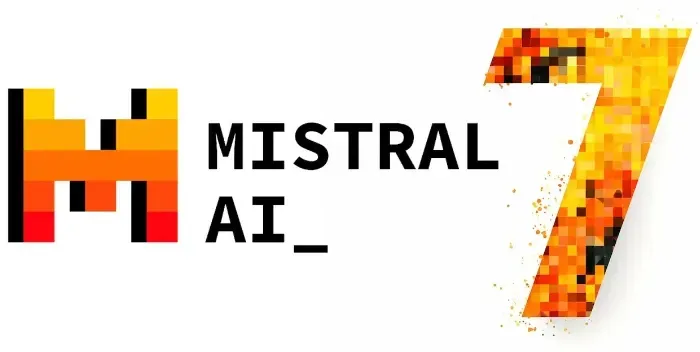Run Mistral 7B on macOS: Step by Step Guide

The rise of smaller yet highly capable Large Language Models (LLMs) has broadened the possibilities for edge device applications. This guide provides a detailed walkthrough for deploying the Mistral 7B model on macOS devices, including those powered by M-series processors.
What is Mistral 7B?
Mistral 7B is a compact yet powerful language model designed for local deployment on modern computers. Its small size makes it ideal for running AI applications directly on macOS devices like MacBooks, eliminating the need for cloud connectivity.
Prerequisites
Before proceeding, ensure you have the following:
- A Mac device running macOS.
- At least 8GB RAM (16GB recommended for optimal performance).
- Basic familiarity with the command line.
Methods for Running Mistral 7B on macOS
There are multiple ways to run Mistral 7B on macOS, each offering unique benefits:
- Ollama: A streamlined tool for managing and running LLMs locally.
- llama.cpp: A C++ library optimized for running LLMs on different hardware.
- LM Studio: A graphical user interface (GUI) based on llama.cpp.
This guide focuses on using Ollama and llama.cpp for deployment.
Method 1: Using Ollama
Ollama simplifies the process of downloading, setting up, and running LLMs on your Mac.
Step 1: Installing Ollama
- Visit the Ollama website and navigate to the download section.
- Download and install the macOS version of Ollama by dragging it into the Applications folder.
- Launch Ollama from the Applications folder or via Spotlight search.
Step 2: Running the Base Mistral Model
- Ollama will automatically download the model and initiate a chat session.
- Interact with the model by entering prompts and pressing Enter.
Open Terminal and run the following command to download and start Mistral 7B:
ollama run mistral
Step 3: Creating a Custom Mistral Model (Optional)
- Create a new file named
Modelfile. - Save and navigate to the file’s directory in Terminal.
Run the new model using:
ollama run <model_name>
Build the custom model with:
ollama create <model_name> -f Modelfile
Add the following content:
FROM mistral
# Add custom configurations here.
Step 4: Using Mistral 7B in Python (Optional)
- Ensure Ollama is running in the background.
Use Python to interact with the model:
import requests
import json
url = "http://localhost:11434/api/generate"
headers = {"Content-Type": "application/json"}
data = {"model": "mistral", "prompt": "Write a short story about a cat", "stream": False}
response = requests.post(url, headers=headers, data=json.dumps(data))
print(response.json().get("response", "Error"))
Method 2: Using llama.cpp
llama.cpp is a powerful C++ library optimized for Apple Silicon.
Step 1: Installing Dependencies
Install PyTorch:
pip install torch torchvision
(Optional) Create a virtual environment:
python3 -m venv venv
source venv/bin/activate
Install dependencies using Homebrew:
brew install pkgconfig cmake
Install Xcode:
xcode-select --install
Step 2: Cloning and Building llama.cpp
Build the project:
mkdir build && cd build
cmake ..
make -j
Clone the repository:
git clone https://github.com/ggerganov/llama.cpp
cd llama.cpp
Step 3: Obtaining Mistral 7B Model Weights
- Download the model weights in GGML or GGUF format from Hugging Face.
- Place the weights in the
modelsdirectory withinllama.cpp.
Step 4: Running the Model
Run the model with:
./main -m ./models/mistral-7b.gguf -n 128 -p "The first man on the moon was "
Replace ./models/mistral-7b.gguf with the correct model path.
Optimizing Performance
For better performance, consider these optimizations:
- Quantization: Use a quantized model (e.g., Q4_K_M) to reduce memory usage.
- Metal Acceleration: Build llama.cpp with Metal support for GPU acceleration.
- RAM Management: At least 16GB RAM is recommended for smooth execution.
Alternative Methods
- LM Studio: A GUI-based approach for running LLMs with llama.cpp.
- Pinokio: A local browser-based tool for managing server applications.
Troubleshooting
- Out of Memory Errors: Use a smaller quantized model or reduce context length.
- Slow Performance: Ensure Metal support is enabled and your Mac meets memory requirements.
Use Cases
Running Mistral 7B locally on macOS enables:
- Privacy-focused AI: Process sensitive data without cloud dependency.
- Offline AI Applications: Use models without an internet connection.
- Custom Chatbots: Build personalized AI assistants.
- Educational Tools: Develop AI-driven learning applications.
Conclusion
This guide has provided a step-by-step approach to running Mistral 7B on macOS using Ollama and llama.cpp. By following these methods, you can leverage the power of local AI, optimize performance, and explore new possibilities in edge AI development.